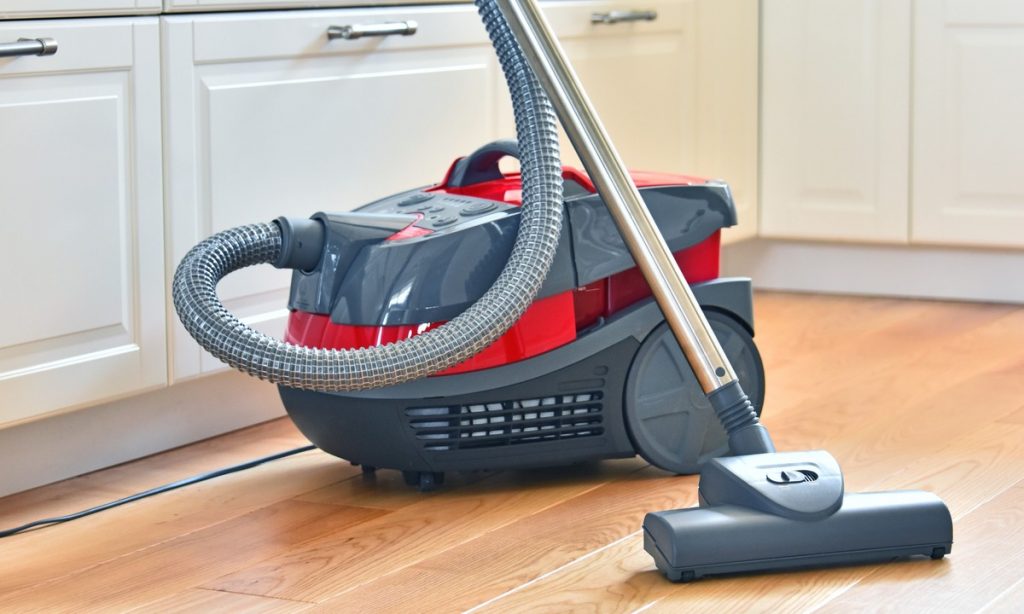Can I Use HEPA Vacuums on Mold?

Keeping your home and workplace clean is not only necessary to create an inviting environment, but it is essential for your health. Mold in your home poses a health risk, especially if you have asthma or allergies. Exposure to large amounts of mold spores can cause eye, skin, throat, and nose irritation in almost anyone, while people with allergies can also suffer from headaches, difficulty breathing, wheezing, coughing, and fatigue.
Like with dust, it is near impossible to remove every single mold spore from carpets and living spaces, but using the right tools can significantly decrease their presence and considerably improve your health. Where non-HEPA vacuums simply pass most mold spores through the filtration and right back into the air, HEPA vacuums have been lab tested for reducing the number of microscopic spores in the air and surfaces like carpets.
How It Works
High-efficiency particulate absorbing (HEPA) filters have a mechanical pleated design to remove 99.97% of all common allergens 0.3 microns in size. This includes the effective filtration of dust, pollen, mildew, and mold. Unlike non-HEPA vacuums that can send out even more spores into the air and risk spreading them on food sources and other surfaces, a HEPA vacuum works by pushing air through a dense mesh filter and thereby trapping harmful particles inside.
Mycotoxins, which are produced by mold spores, are more complicated to get rid of and will require additional removal efforts. This is why it is important to eliminate the source of toxin production with an effective vacuum system before it starts becoming a complicated endeavor to keep your home allergen-free.
HEPA Vacuum Cleaner Must-Haves
When choosing a HEPA vacuum there are a few things to look out for to ensure you get the best results.
- No air leakage: Effective seals are imperative to ensuring particles don’t escape back into the air. Leaking air will pass straight by the filtration system and send mold spores flying out again. A HEPA vacuum should be well sealed so that all the air passes through the filtration system, trapping any harmful particles.
- Quality pre-filters: Pre-filters are the layers of additional filters that surround and protect the main HEPA filter. Besides aiding in the filtration process, having these filters will extend the life of the main HEPA filter which means you won’t have to replace it as frequently.
Bag vs. Bagless Units
When it comes to general vacuuming not specifically aimed at reducing allergens in the home, bagless units tend to be lightweight and may save you the hassle, cost, and additional waste of purchasing and disposing of vacuum bags. However, when it comes to HEPA vacuums, a machine with bags may be a more effective option.
Having the dirt trapped in a bag that you can simply remove and dispose of poses less threat of spores flying around than having to empty out an unprotected compartment. Bagless dirt containers should be properly cleaned or washed to avoid dirt build-up and should be emptied frequently. It is best to empty them into an outdoor trash can or bin to prevent dust and allergens from being released back into your indoor space.
When choosing a machine that uses bags, check that the type of bags needed are easily available and whether there are alternative options that are also compatible with the machine. If you can’t find the bags required, it helps to know there are other options that will work just as well. Where possible, opt for environmentally friendly bags or those made from recycled materials.
Multi-Surface Cleaning
Make sure your HEPA vacuum can be used on hardwood and tile floors as well as carpets equally effectively. Handheld or cordless vacuums are best for cleaning surface-level dirt. You will need higher suction power to remove settled particles, spores, and dust from carpets and rugs.
You also want to make sure your vacuum can reach high and low corners and crevices. Having a long, obstruction-free handle and specially designed cleaning attachments for upholstery cleaning, pet hair removal, and crevices, can make a big difference to cover even the hard-to-get-to places.
If you are serious about minimizing allergens in your home, a HEPA vacuum is a must-have cleaning tool.
